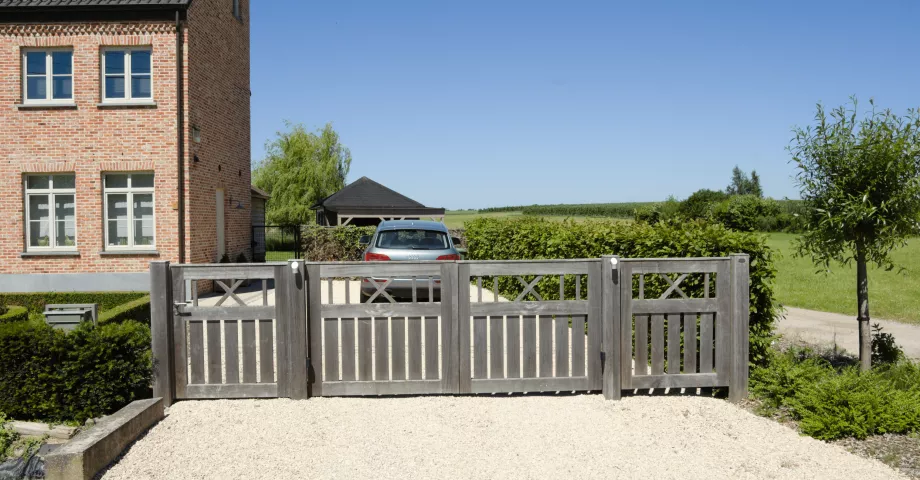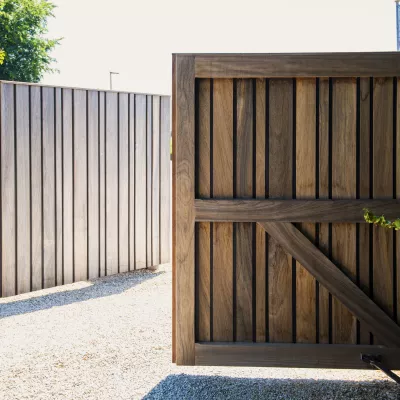Open versus closed closures
Open closures are gates and fences made of wire or wire mesh. If you make them a maximum of 2 metres high, you can do so without a permit. Fencing that you can see through but is made of other material is not considered open fencing. Think wooden fences with space between slats. For this, you will usually need an environmental permit.
Do you want to install an open fence on the plot boundary? Check with your neighbours if they agree. If they are not too keen on the idea, the fence should be placed entirely on your land. Without the neighbour's permission, you are not allowed to place anything on the plot boundary.
Positioning the gate and fence
Where you want to place which closure is also relevant. For example, you do not need a permit for a closed fence in your front garden, provided the fence is no more than 1 metre high. In the side and back gardens, a fence up to 2 metres is allowed without a permit. Do you have a large garden and fencing around the entire estate sounds like music to your ears? Only for closures within 30 metres of your home will you get an exemption from the permit requirement.
For gates, the law is a bit more lenient. You may install these in your front, side and back gardens without a permit if they do not exceed 2 metres in height. Moreover, the 30-metre rule does not apply here.
Every municipality is different.
It is important to note that regulations are not the same across Flanders. Indeed, each municipality can impose additional conditions. So be sure to visit the town hall to inquire.




